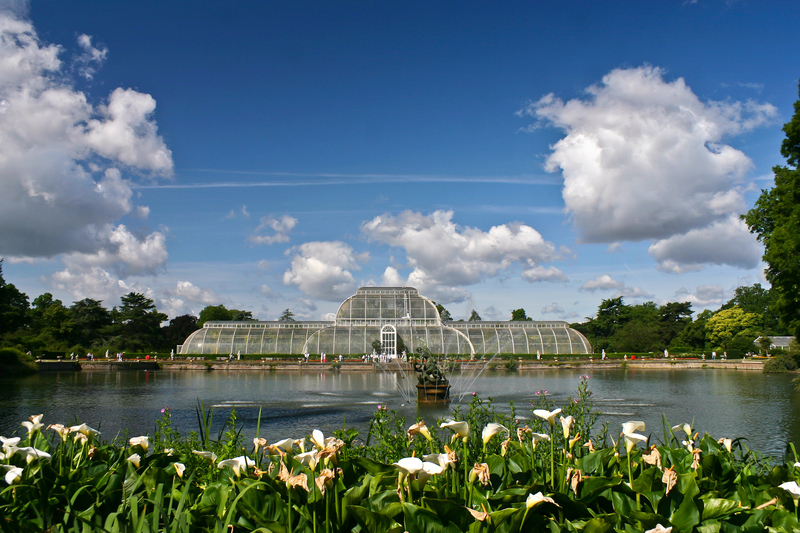Master the Art of Garden Comfort: Building Great Seating Areas
Posted on 28/05/2025
Master the Art of Garden Comfort: Building Great Seating Areas
There is nothing quite like unwinding in a perfectly designed garden seating area. Whether you're sipping morning coffee, reading an engrossing novel, or hosting friends and family, garden seating elevates your outdoor experience. If you aspire to turn your garden into a cozy retreat, mastering the art of comfortable, attractive, and practical seating is essential. In this comprehensive guide, we'll walk you through every step of building great seating areas in your garden, with creative ideas, actionable tips, and expert insights to help you achieve the ultimate garden comfort.
The Importance of a Comfortable Garden Seating Area
Before diving deep into garden seating design, let's take a moment to appreciate why these areas matter. A well-designed outdoor seating area can:
- Enhance your connection with nature
- Offer a peaceful space for relaxation
- Increase the aesthetic appeal and value of your property
- Serve as a social hub for entertaining
- Encourage time spent outdoors, supporting overall well-being
Understanding these benefits sets the stage for creating a garden that goes beyond looks and truly supports comfortable, practical outdoor living.

Planning Your Garden Seating Area
The foundation of great garden seating lies in mindful planning. Consider these critical steps before you start digging or buying furniture:
1. Define Your Purpose
Is your seating area meant for quiet contemplation, lively gatherings, family meals, or all of the above? Identifying your primary uses will inform all design choices ahead.
2. Analyze Your Space
- Map out potential zones for seating in your garden.
- Observe sun and shade patterns throughout the day.
- Take note of prevailing breezes, privacy needs, and views you wish to frame or screen.
3. Choose the Right Style
The style of your garden seating area should harmonize with your home and landscape. Consider whether you prefer a modern, rustic, classical, or eclectic vibe.
4. Set a Budget
Seating areas can be achieved on any budget, from simple DIY benches to luxurious custom installations. Plan for materials, furnishings, and any construction costs.
Types of Garden Seating to Consider
Your seating options are nearly limitless! Knowing the pros and cons of each can help you select the best fit for your space and lifestyle.
1. Benches
Garden benches are timeless, space-saving, and versatile. Position them under trees, along paths, or as a focal point by flowerbeds to invite relaxation. Materials range from wood and metal to stone and composite.
2. Outdoor Sofas and Lounges
For the ultimate in garden comfort, consider outdoor sectional sofas, lounge chairs, or daybeds. These create an indoor-like living room feel under the sky.
3. Dining Sets
If your garden is a regular venue for alfresco meals, invest in a sturdy patio dining set. Look for weather-resistant materials and easy-to-clean surfaces, perfect for family gatherings and parties.
4. Hammocks and Swings
Embrace a playful spirit with a hammock or a hanging chair! Swings add a sense of whimsy and are favorites for both adults and children.
5. Built-In Seating
Permanent features like built-in seat walls, stone arches, or integrated timber benches maximize space and blend beautifully with terraces and patios.
6. Portable and Foldable Chairs
If flexibility is key, go for lightweight, foldable or stackable seating that you can reposition as needed for sun, shade, or events.
Designing for Maximum Comfort
Comfort is king when it comes to garden seating. To truly master outdoor comfort, address these critical aspects:
1. Supportive Cushions and Upholstery
All-weather cushions provide plush support while withstanding the elements. Opt for UV-resistant, quick-drying fabrics for both aesthetic appeal and longevity.
2. Ergonomics and Accessibility
Choose seating that allows for proper posture, with adequate back and arm support. Vary seat heights and depths for the comfort of all users, and ensure easy access for people of all abilities.
3. Shade and Shelter
- Integrate natural shade from trees or hedges.
- Install pergolas, umbrellas, or shade sails for sun protection.
- Add retractable awnings or glass canopies to extend usability across seasons.
4. Year-Round Appeal
Plan for all-season enjoyment by incorporating:
- Fire pits or patio heaters for chilly evenings
- Outdoor rugs and throws for warmth and texture
- Weatherproof covers to protect furniture in winter
5. Enhance Privacy
Use tall planters, trellises, or decorative screens to shield your seating area from neighbors while creating a sense of enclosure and intimacy.
Incorporating Nature Into Your Seating Area
Blending your garden seating area seamlessly with nature not only uplifts its beauty but also creates a truly restful sanctuary. Here's how:
1. Surround Yourself with Greenery
- Use container gardens, raised beds, or border plantings to soften hard edges.
- Opt for lush, fragrant plants such as lavender, jasmine, or roses to delight the senses.
- Select evergreens for year-round color and structure.
2. Attract Wildlife
Incorporate bird feeders, water features, or pollinator-friendly plants to invite birds and butterflies, enriching your garden experience.
3. Layer Lighting and Ambience
Outdoor lighting transforms evening gatherings. Use string lights, solar lanterns, or candles for a magical, cozy glow that encourages lingering after sunset.
Practical Garden Seating Layout Tips
Getting the layout right is crucial for both function and flow. Follow these expert pointers to design a seating area that feels inviting and accessible:
1. Consider Proximity to the House
Situating your main seating close to the kitchen or entry allows for convenient dining and entertaining. For a retreat vibe, place a secondary zone further into the garden.
2. Leave Ample Space
- Allow at least 30-36 inches for walking paths around seating.
- For dining, plan at least 24 inches of width per person at the table.
3. Orient for Views and Light
Arrange seats to capture the best garden vistas and natural light, or to follow the sun's path during the day.
4. Integrate Multi-Use Zones
Create flexible zones with movable furniture, rugs, or planters so your garden adapts to both intimate moments and large gatherings.
DIY and Upcycling Ideas for Unique Garden Seating
On a budget or seeking something original? DIY and upcycled furniture is a fantastic way to add personality to your seating area.
- Repurpose pallets or old doors into benches and coffee tables
- Use tree stumps or large stones as rustic stools
- Paint or mosaic old chairs for a pop of color
- Create log benches along winding garden paths
Not only do these projects save money, but they also infuse your garden with unique charm and creativity.
Maintenance Tips for Long-Lasting Garden Comfort
Preserving the beauty and comfort of your garden seating area ensures years of enjoyment:
- Clean and store cushions when not in use to prevent mold and mildew
- Oil wooden furniture annually to prevent cracking or fading
- Inspect metal for rust and repaint as needed
- Check fasteners and joints for safety and stability
Routine care goes a long way in maintaining your outdoor oasis.

Trends in Garden Seating Design
Discover the latest innovations that are inspiring homeowners and garden lovers alike:
- Modular and convertible furniture for adaptable layouts
- Sustainable materials such as recycled plastics, bamboo, or certified timber
- Bold colors and patterned fabrics that make a stylish statement
- Integrated smart lighting and USB charging options
- Biophilic design--blurring boundaries between indoors and outdoors with living walls and planters
Conclusion: Transform Your Garden into a Haven of Comfort
Mastering the art of garden comfort is about thoughtful design, creativity, and a focus on how you love to relax and connect. By planning carefully, choosing the right seating, and prioritizing comfort and style, you can create an inviting outdoor space that draws you outside again and again. Building great seating areas in your garden isn't just a design challenge; it's an opportunity to craft your personal slice of paradise.
Whether you prefer tranquil corners shaded by trees, expansive dining terraces, or playful swings amidst flowers, your perfect garden seating sanctuary awaits. Start planning today, and elevate the comfort, beauty, and joy of your outdoor living!
Key Takeaways for Building the Ideal Garden Seating Area
- Identify your main uses and plan seating accordingly
- Choose weather-resistant, ergonomic furniture with plush cushions
- Use shade, greenery, and privacy features for year-round comfort
- Incorporate personal touches and DIY elements for unique flair
- Maintain your seating area to ensure continued enjoyment
By applying the above ideas and insights, you'll not only master the art of garden comfort but also create a lasting, cherished oasis right in your own backyard.



